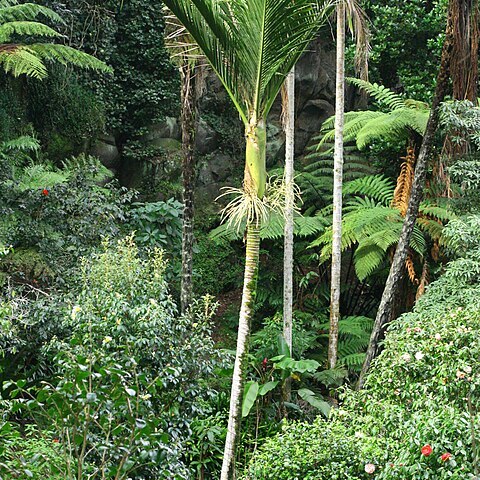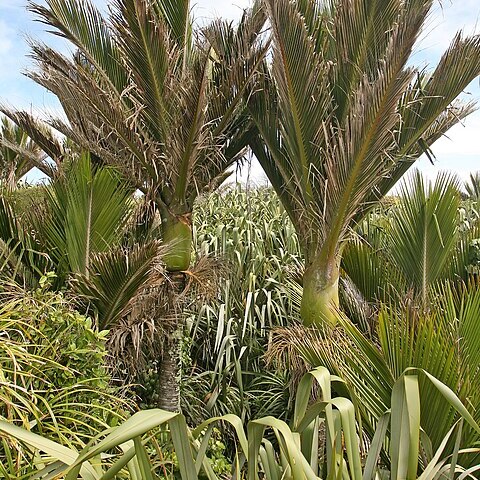An upright palm with bulging crown-shaft. It can be 8-12 m high. The trunk is 10 cm across. It is ringed with the scars of fallen leaves. The crown has 12-16 straight erect leaves. There is a crown-shaft 30 cm long. The leaves and leaflets are stiff and upright. This gives the palm a "feather duster" like appearance. The leaves are 1.5-2 m long. The midrib of the leaf is often slightly twisted. The flower stalk grows below the crown-shaft. It is 25-40 cm long. The flowers are purple to red. The fruit are bright red when ripe. They are 8-12 mm long and 7-8 mm wide.


